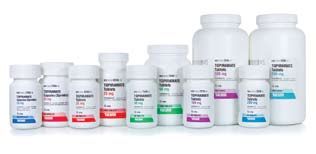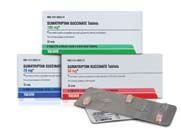Publication
Article
Generic Supplements
TEVA Pharmaceuticals…a Market Leader
By any measure, Teva Pharmaceuticals (Teva) is the leader in the generic pharmaceutical market, ranking number one in prescriptions filled, sales dollars, and abbreviated new drug application (ANDA) filings, including first-to-files, product launches, breadth of product line, vertical integration, pedigree technology, and many other criteria.
Last year closed with the acquisition of Barr, effective December 23, 2008. The combination of Teva and Barr creates an unrivaled management team and global product platform. Teva now has over 38,000 employees and annual sales that totaled $11.1 billion in 2008. As a result of the acquisition, the combined company now markets the broadest product line in the United States, comprising over 450 products and 1500 SKUs. The acquisition also strengthens Teva’s development, manufacturing, legal, marketing, and distribution capabilities, and significantly expands its portfolio and future product pipeline.
Teva’s mission is to play a leading role in the continuing transformation of the US health care system. With the integration of Barr, Teva will play an even greater part in expanding the public’s access to affordable medicines. Teva has a well-established and balanced portfolio of products that customers want, and a strong active pharmaceutical ingredient business to meet their needs. In addition, a vertically integrated structure ensures that as Teva continues to grow, the company can maintain its high standard of quality and its longstanding commitment to customer satisfaction.
Teva also is making strides in the emerging biosimilars market, a major growth driver in the company’s long-term strategy. Earlier this year, the company announced an agreement with Lonza Group Ltd to establish a joint venture to develop, manufacture, and market affordable, efficacious, and safe generic equivalents of a selected portfolio of biologic pharmaceuticals. The 2 organizations complement each other. Lonza brings a deep knowledge and experience in biopharmaceutical development, large-scale manufacturing, and state-of-the-art manufacturing facilities. Combined with Teva’s global leadership and expertise in clinical development and marketing of generic pharmaceuticals, the joint venture generates significant opportunities and benefits for both companies.
Teva Health Systems (THS), the division of Teva focused on institutional segments, is building a dominant position of its own. By structuring a sales approach that leverages everything Teva has in its vast existing portfolio of oral and injectable formulations, together with the most productive product pipeline in the industry, THS has established itself as a major player in the market. THS continues to introduce unit dose versions of the company’s oral product line and is the leading producer of oncology products in the United States.
Teva launched 28 generic products in 2008 and had 197 ANDAs pending FDA approval as of April 27, 2009. Recently launched products include Mycophenolate Mofetil Tablets & Capsules, AB-rated to Roche’s CellCept; Topiramate Tablets and Capsules (Sprinkle), AB-rated to Ortho- McNeil’s Topamax; Mixed Amphetamine Salt Extended-Release Capsules, same as Shire’s Adderall XR; Sumatriptan Succinate Tablets and Injection, AB/ AP-rated to GSK’s Imitrex; Risperidone Tablets and Oral Solution, AB/AA-rated to Janssen’s Risperdal; Levetiracetam Tablets, AB-rated to UCB Pharma’s Keppra; Fentanyl Transdermal System, AB-rated to Janssen’s Duragesic; and Rocuronium Bromide Injection, AP-rated to Organon’s Zemuron.
Teva is the leading provider of affordable generic medicines. Our robust pipeline of future products is a source of continuing value to American consumers.
For more information, call 888-TEVA-USA, visit www.tevausa.com, or e-mail [email protected].

Topiramate Tablets, 25, 50, 100, and 200 mg; and Topiramate Capsules (Sprinkle), 15 and 25 mg

Sumatriptan Succinate Tablets, 25, 50, and 100 mg







